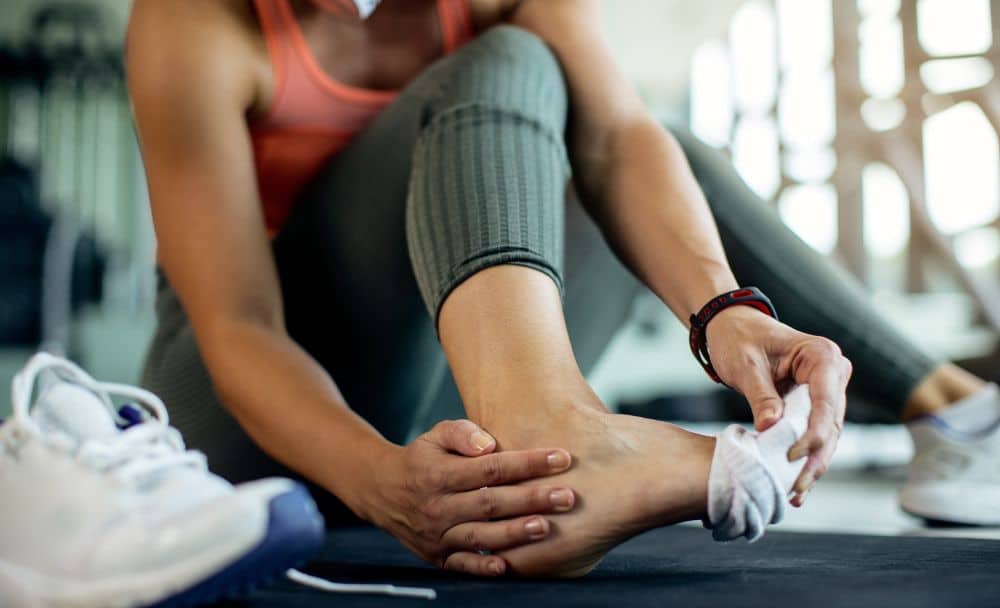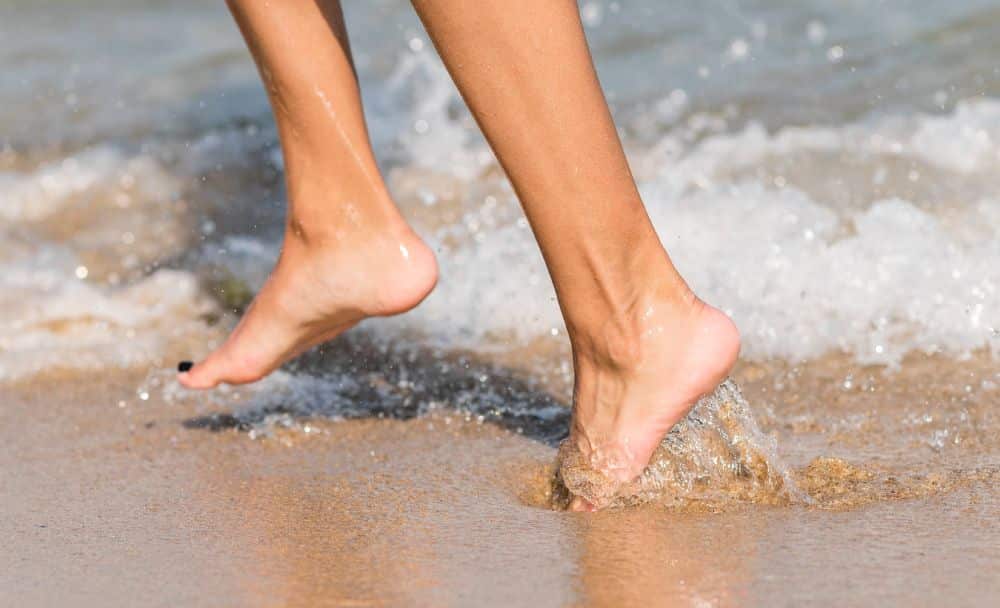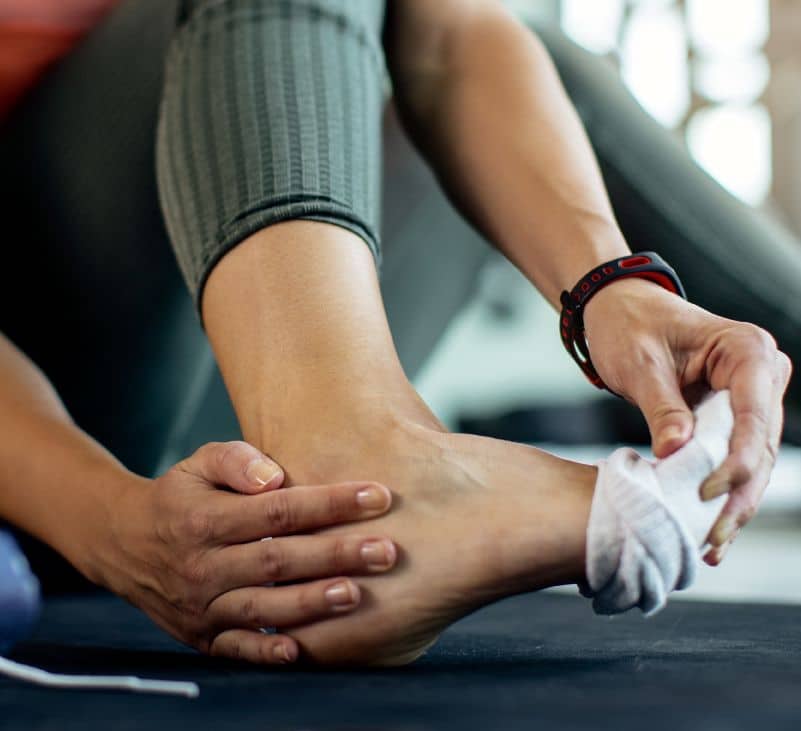
Athlete’s foot is a common fungal infection affecting millions worldwide. The condition primarily affects the feet, particularly the spaces between the toes. While athlete’s foot is familiar to athletes, it can affect anyone, from sports enthusiasts to those who visit warm, moist environments like public showers or swimming pools.
This article will explore the causes, symptoms, diagnosis, and treatment options for athlete’s foot. Understanding athlete’s foot meaning and the ins and outs of this condition is crucial in managing its discomfort and preventing its spread to other parts of the body or other individuals.
What is athlete’s foot?
Athlete’s foot disease is scientifically known as tinea pedis. It is a fungal infection that affects the skin of the feet. The name “athlete’s foot” originated from its prevalence among athletes who often share communal areas like locker rooms, showers, and gymnasiums, providing an ideal breeding ground for the fungus.
The main culprit behind athlete’s foot is a group of fungi called dermatophytes. They thrive in warm and moist environments. These fungi are common in places where people walk barefoot, such as public pools, saunas, and changing rooms.
When the feet come into contact with the dermatophytes, they can invade the outer layer of the skin, leading to an infection. The spaces between the toes are particularly vulnerable to this condition due to the increased moisture and reduced ventilation in that area. Athlete’s foot is contagious and spreads through direct contact. Furthermore, it also spreads by sharing contaminated towels, socks, or shoes.
What are the causes of athlete’s foot?
Athlete’s foot is caused by various factors, all of which contribute to creating an environment conducive to fungal growth. Let’s explore the fundamental causes that increase the risk of developing this foot infection.
- Closed shoes
Wearing closed shoes, especially those with a plastic lining, can trap moisture and heat around the feet, creating a breeding ground for fungi. These fungi thrive in moist environments and the lack of ventilation inside closed shoes provides an ideal habitat for their growth. [1]
- Wet feet
Keeping feet wet for extended periods leads to moisture, providing ideal conditions for fungal proliferation. Soaking your feet for too long, not drying them thoroughly after bathing or swimming, or wearing damp socks and shoes can create an environment that favors the growth of dermatophytes. [1]

- Excessive sweating
If you sweat excessively, you may be more prone to Athlete’s Foot. Excessive sweating, known as hyperhidrosis, can lead to persistent moisture on the feet, making them susceptible to fungal infection. [1]
- Skin or nail injury
Even minor cuts, scrapes, or cracks in the skin can provide an entry point for the fungi to invade and infect the foot. Similarly, an existing fungal infection on the nails can spread to the surrounding skin, leading to athlete’s foot. [1]
What are the symptoms of athlete’s foot?
The following signs may indicate this fungal infection:
- Toe skin deterioration
One of the most common symptoms of Athlete’s Foot is cracked, flaking, and peeling skin between the toes. [1]
- Skin itchiness
The affected skin may feel irritated and become increasingly sensitive to touch. The persistent itching can be quite bothersome, leading to a strong urge to scratch. It can make the condition worse and spread the infection to other areas. [1]
- Burning or stinging pain
Many individuals with athlete’s foot experience a burning or stinging pain in the affected areas. The sensation can vary in intensity and may cause discomfort while walking or wearing shoes. [1]
- Blisters
In some cases, blisters may develop on the affected skin. These blisters can ooze fluid and eventually form crusts. [1]
- Nail discoloration
When fungal infection spreads to the nails, they can change appearance. Infected nails may become discolored, appearing yellowish, and may also become thick and brittle. [1]
What is the diagnosis of athlete’s foot?
To confirm the presence of athlete’s foot and determine the appropriate course of treatment, healthcare professionals employ the following diagnostic methods:
- Tests
One of the common tests is the potassium hydroxide (KOH) exam. The test helps identify the presence of fungal elements. [1]
- Skin culture
A small skin sample gets collected and sent to a lab. It then gets placed in a culture medium that encourages the growth of fungi. It allows the healthcare provider to determine the fungus causing the infection. [1]
- Skin biopsy
In a skin biopsy, a small skin piece gets removed, which goes to a laboratory for further examination. It helps identify the presence of fungi and determine the specific species causing the infection. [1]
What is the Ayurvedic treatment of athlete’s foot?
Garlic is famous for its potential to address fungal infections, including athlete’s foot. It contains natural compounds with antifungal properties that can aid in combating the fungal growth on the feet. One method involves soaking your feet in garlic-infused water, which may help alleviate symptoms and contribute to the resolution of the infection. Ark taila (Ayurvedic herbal oil) is another potent remedy in combating fungal growth.
Additionally, applying garlic steeped in olive oil directly to the infected area can assist in suppressing the growth of fungi. However, consult a doctor for an appropriate treatment plan for athlete’s foot. [2]

FAQs
- What are the three types of athlete’s foot?
The three types of athlete’s foot are interdigital (between the toes), moccasin-type (affecting the sole and sides of the feet), and vesicular (characterized by fluid-filled blisters).
- Is Athlete’s Foot a serious disease?
While Athlete’s Foot is not typically a severe disease, it can cause discomfort, itching, and pain. If left untreated or complications arise, such as secondary bacterial infections or the infection spreading to other parts, it can lead to more significant health issues.
- What antibiotics are used to treat athlete’s foot?
Antibiotics are not typically used to treat athlete’s foot because fungi, not bacteria, cause this condition. Antifungal medications, both topical and oral, are the primary treatments for athlete’s foot. These medications specifically target and eliminate fungal infections.
- What kills foot fungus naturally?
Several natural remedies can help kill foot fungus. Garlic and coconut oil are common natural remedies that possess antifungal properties. However, while these natural remedies can be effective for mild cases, severe or persistent infections may require medical intervention with prescription antifungal medications.
Conclusion
Athlete’s foot affects the feet, particularly the spaces between the toes. Consulting a healthcare professional for an accurate diagnosis and personalized treatment plan is essential. Understanding the causes, recognizing the symptoms, and seeking appropriate treatment will help you effectively manage and prevent the spread of athlete’s foot. In addition, it will help you quickly restore the health and comfort of your feet.
Disclaimer:
The information provided here is not intended to replace professional advice or treatment.

























